A stellar social media strategy creates a conversation and opens a dialogue with your target audience. But if you’re focusing all your attention on gathering likes, comments, and shares, you may be doing more talking than listening to your followers – and that’s a huge mistake.
As recent statistics show:
- Social media is one of the best ways to engage with your target audience. 80% of customers use social media to interact with businesses *.
- Your audience wants to share their opinions. 35% of Americans will go out of their way to post a negative comment on social media; 53% will share a positive comment *.
- Your responses matter. Responding to social media complaints can boost customer loyalty by 25%. But not responding to comments could cause a 15% bump in your churn rate *.
If you’re like many brands, you probably don’t spend enough time on this part of the puzzle.
In this guide, you’ll see why it pays to do so and learn how to collect feedback on social media like a pro.
Why you should use social media to collect feedback
Before we show you exactly how to generate great feedback from your customers using social media, it’s important to understand why this is worth your time in the first place.
Following through on this strategy will help you and your brand:
1. Get Ahead of Complaints and Grievances Before They’re Aired
Getting called out by customers on social media sucks. Not only is the complaint visible to the public, but new customers may also see the post. If this occurs during the buying process, it could sway potential customers from not moving forward, or at least probe more into the complaint they saw.
To avoid the back-and-forth for the public to see, it pays to create an open dialogue with your customers on social media. Then you can get ahead of customer service complaints before they start to wear on your brand reputation.
Doing this will allow your customers to feel more comfortable reaching out to you. And it should stop the knee-jerk reaction of putting their complaints on full blast via social media.
2. Make your customers feel like they’re part of your brand
Consumers are too smart to accept being “sold to” these days.
Modern customers want to be involved with brands on a more personal level. They want to feel like they’re part of a community that listens to their input and values their opinions. In fact, 64% of consumers said they want brands to connect and interact with them on social media.
Below is an example of Taco Bell, a brand that is great at interacting with its followers, notifying a customer of an upcoming menu change.
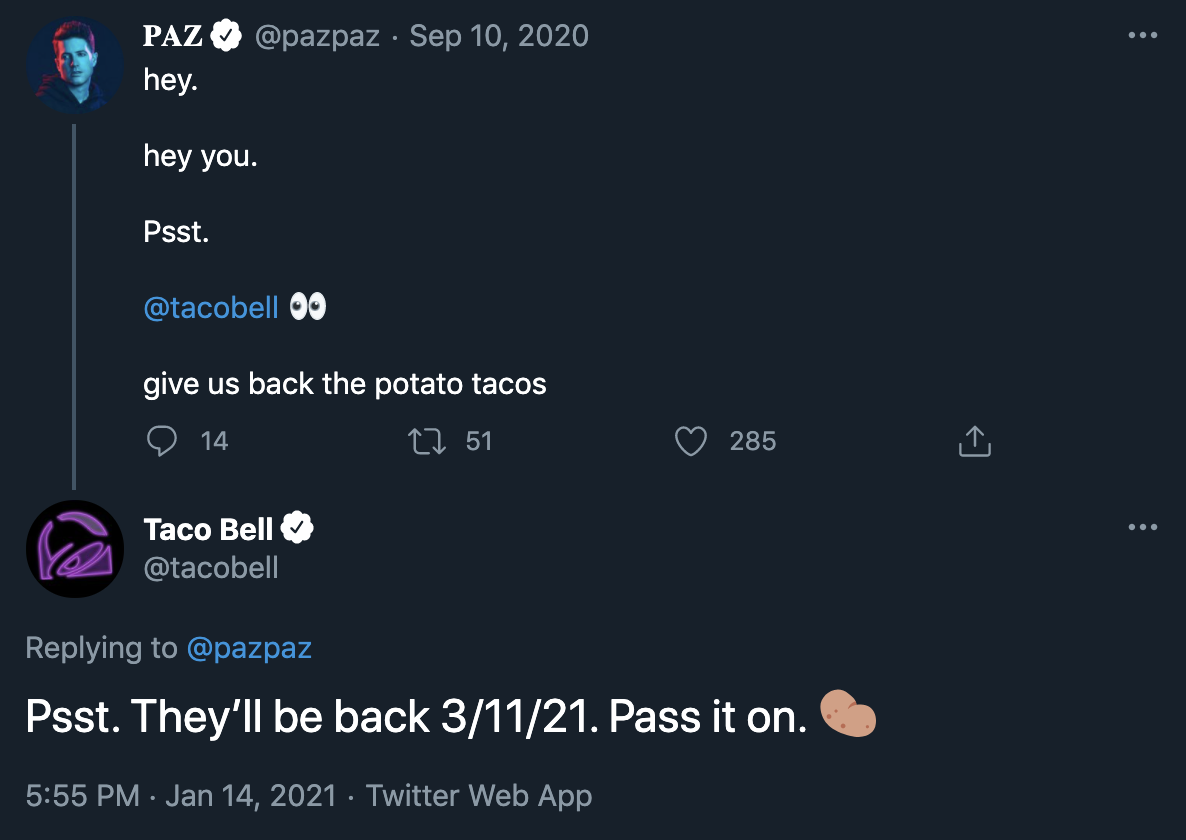
Creating a community of engaged followers is difficult, but doing so is a great way to increase brand loyalty. You’ll have to actually make your customers an integral part of your brand, aside from just being a sales number to reach.
Collecting feedback is an ideal way for your business to do this and help customers feel involved simultaneously.
3. Generate ideas for new products and features
Gathering feedback isn’t just good for the customer experience, but it can also inspire ideas for new products and features. Rather than working on what you think your customers will like, you can spend the resources on what they actually want.
Below is an example of Semrush intaking customer feedback on social media, notifying the customer their feedback is heard, and giving that customer the option to take the conversation into a DM so they can notify them when the feature is implemented. This is just one example of a great way to involve your social media followers.
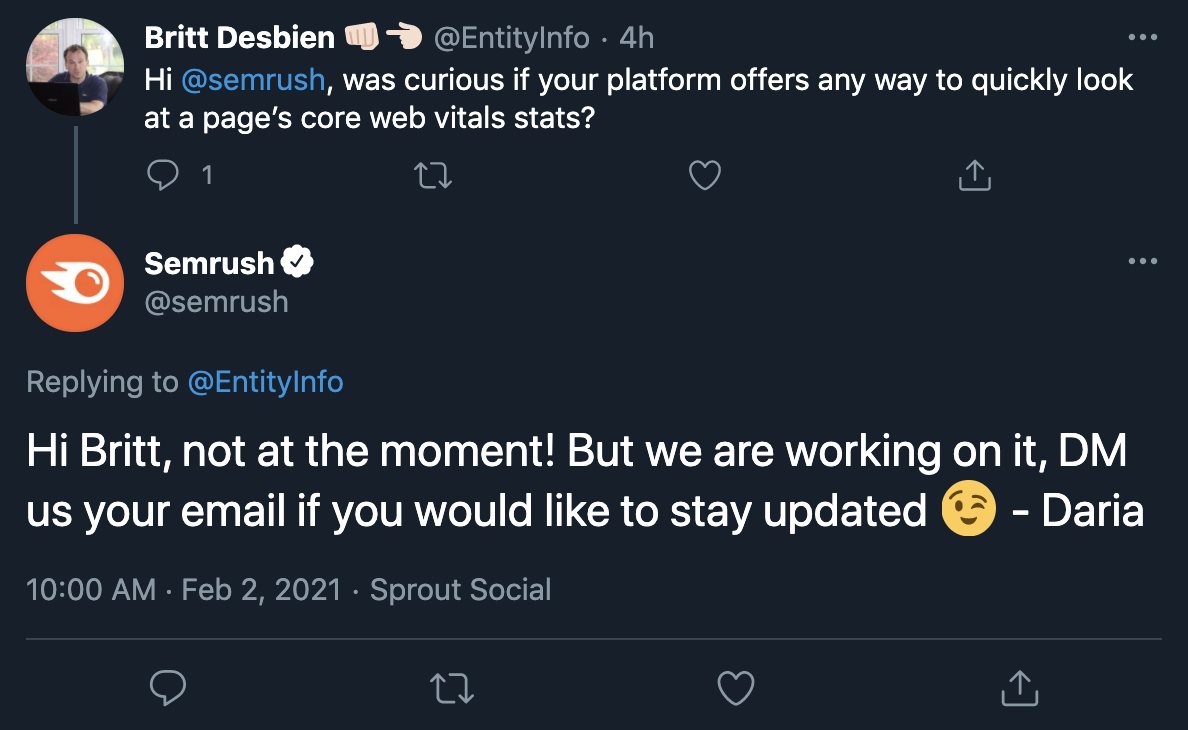
Customers will find more value in your products and services as they improve, and they’ll be excited that you took their input to heart. Putting their ideas into practice can really make them feel like part of your brand.
A quick tip: Want quick but effective feedback from your customers? Have your marketing team listen to sales calls and report back to your product and sales teams with common complaints and satisfaction.
4. Provide better customer support
Collecting feedback via social media will take your customer support to the next level. This real-time interaction allows your team to provide customer service as quickly as possible.
Research shows that 54% of customers prefer to use social media over calling or emailing for customer support. This is typical because people don’t have time to write an email or phone up your team when they’re in trouble or have an issue. They’d much rather send off a quick DM to your company or post on your social media channels.
Giving your audience the option to use social media as a customer service channel means your team can be there when they need help most, and long before issues turn into huge hiccups.
The Beginner's Guide to Collecting Feedback on Social Media
Below are six effective ways for your brand to collect feedback on social media. You may want to try one tactic or a combination of ideas as they fit in your social media strategy.
1. Use a social listening tool
Your business doesn’t have time to check every social media mention you receive in real-time. This would take multiple team members working around the clock to ensure no comment goes unnoticed.
Fortunately, social media listening tools are a better way to accomplish this. These tools monitor your direct and indirect mentions, comments, hashtags, and more. You can integrate all your social media handles with these tools and manage them under a single platform. Easy enough.
Since 60% of customers who complain via social media expect a response within an hour of posting, these are really useful for keeping your social media activity organized. Below is an example of a Sprout Social dashboard, one of the more mainstream social listening tools today:
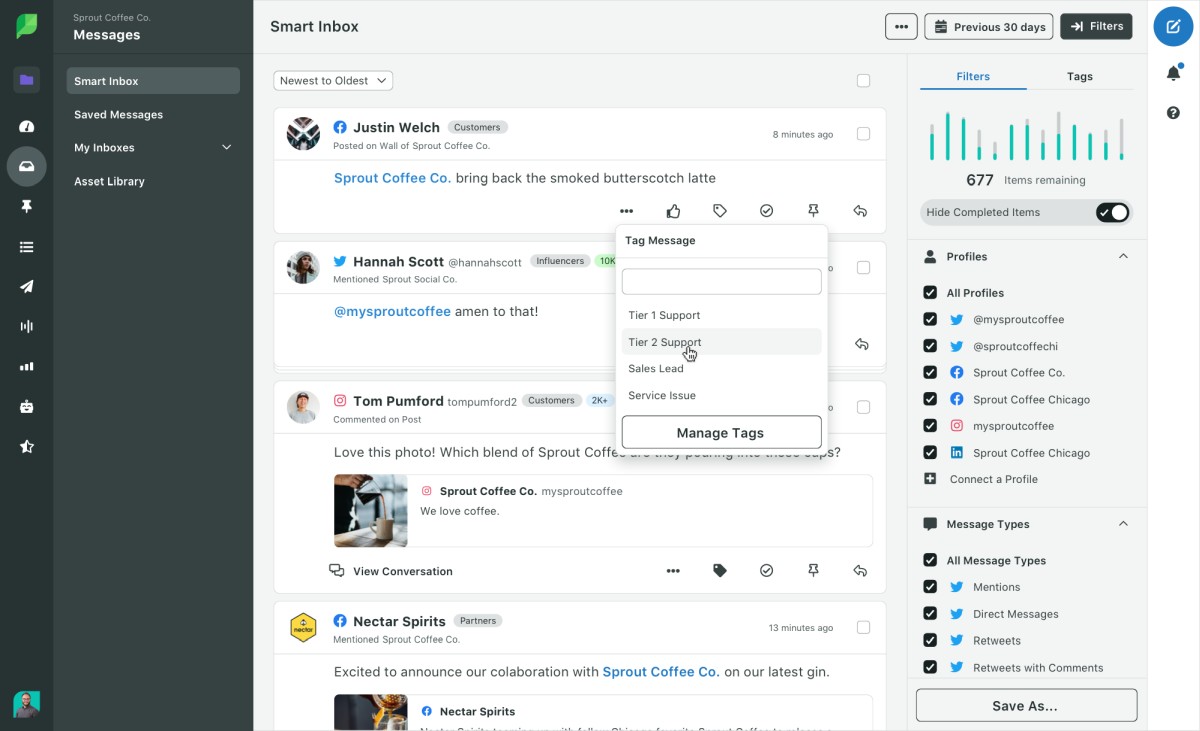
However, while these tools are great at collecting feedback on the back end, you'll need to use the next five tips to encourage your customers to leave feedback in the first place.
2. Run polls on social media
Twitter, Facebook, LinkedIn, and Instagram all have in-app features that allow you to run polls for your audience. Using this, you can ask your followers specific questions to capture feedback. Below is an example of what a Twitter poll looks like:
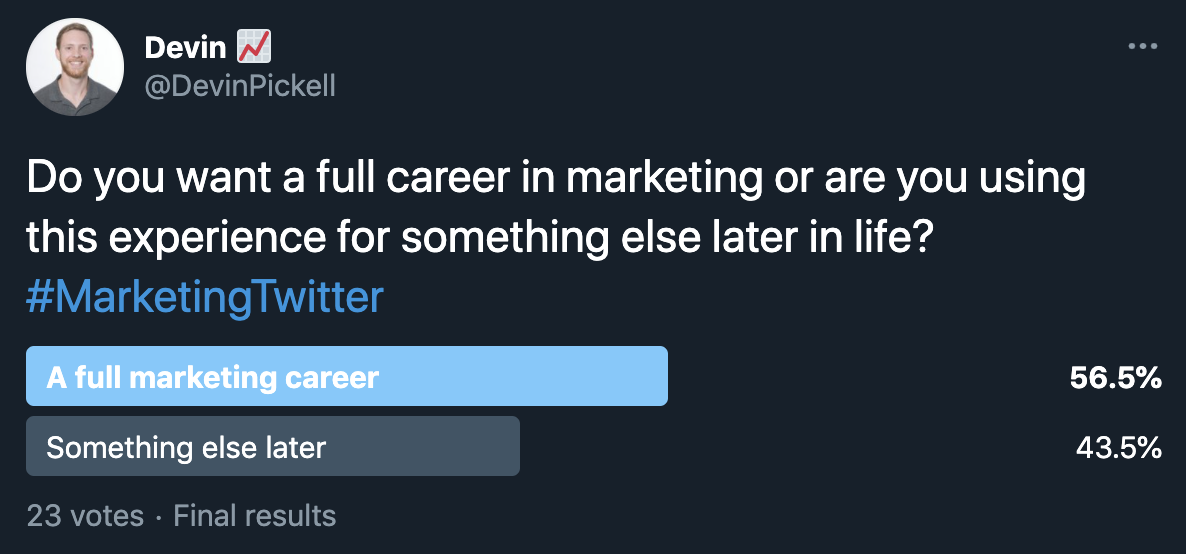
One strategy is to run polls often so your social media audience expects them and knows to engage with them.
However, if you’re not getting the engagement you hoped for – let’s say only a few people voted on the poll – you can send DMs to individual accounts asking them to vote on the poll. Even better if those accounts are actual customers of your product or service. We’ll touch on this later in the article, but reaching your followers directly is one of the best ways to encourage them to leave feedback.
Polls are excellent ways to keep your audience engaged, but if you need more feedback than a simple question will provide, try this next tactic.
3. Create a survey and post it on social media
The biggest downside to using the social media poll feature is that you can only ask one question at a time. Also, social media polls can be manipulated by fake accounts, so you should use them as basic indicators of how your audience feels about a particular question.
One workaround for this is to create a survey using a free online survey maker like Jotform, Survey Monkey, Google Forms, or other popular tools. See below for what it looks like in action:
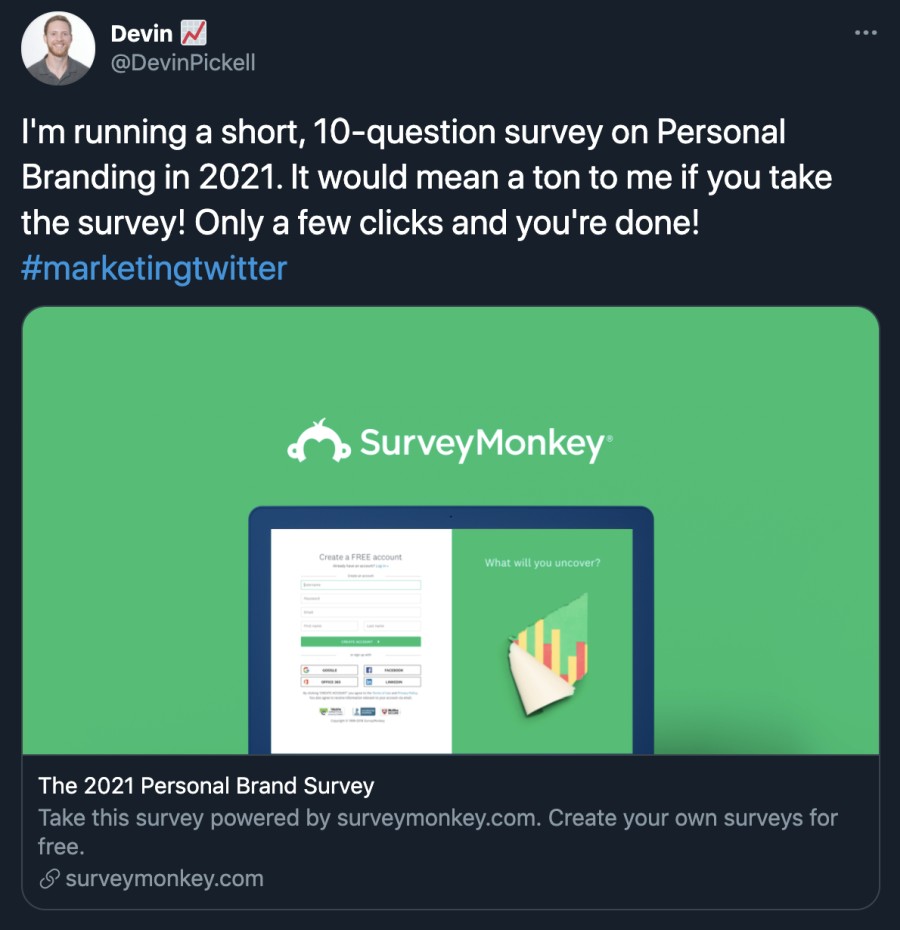
Your audience will click the link in your post, answer the questions in your survey, and submit their feedback.
While your more engaged followers will be happy to oblige, others may need to be incentivized. Offer a discount code or inexpensive gift card for completing the survey – I’ll discuss this more in the next section. For even more responses, you can run paid social ads to give your survey greater reach.
4. Run a social media contest or giveaway
If your surveys aren’t gathering the number of responses you hoped for, try running a social media contest or giveaway.
The truth is, when people are incentivized to do something, they’re more likely to take action. With this tactic, ask your audience for feedback in exchange for an entry in a contest or giveaway. Prizes can be simple as a $50 Amazon gift card, a $100 Grubhub coupon code, or maybe even one year free using your product.

Whatever prize you decide on, just make sure it’s worth it for your customers. A free branded pen, for example, won’t make most people jump through the hoops of providing you with feedback.
Advertise this giveaway on your social platforms, along with the date you’ll announce the winner. You’ll drum up excitement and engagement and create a sense of urgency at the same time. You’ll also be pleasantly surprised by how many people send feedback your way.
5. Directly interact with your audience
How often do you and your team reach out directly to your followers or your customers?
For brands, reaching your audience directly creates a personalized support experience. For employees, reaching your audience directly is a great way to practice social selling, and it improves your relationships with your followers.
This can be as simple as replying to each DM and responding to social media comments, or listening to customer calls on your internet phone system and sending feedback notes to your team. Whatever it is, it will help you understand your audience more deeply.
While these may seem like small actions, they’re much bigger steps in your customer’s eyes, and they’ll do wonders when it comes to relationship building.
These direct interactions foster better customer support and create a human connection between your brand and your audience. Your followers will feel like someone’s actually listening to their concerns and acknowledging them as people, not just another sale.
Show them that their problem is your business’s concern too. After all, if you get this type of feedback from one customer, chances are others have experienced it too. You may also get fresh ideas for features your brand hasn’t thought of like mentioned earlier in this guide.
6. Use a social media chatbot
Social media chatbots are useful if you’re short on time and manpower.
Chatbots automatically take in your social media customer feedback and use artificial intelligence to respond on their own without the help of your human reps.
Using what’s known as conversational AI, the chatbots pick up on the keywords your customers use and try to answer their questions using the most appropriate responses. Simpler social media chatbots can use preloaded buttons to resolve customer support queries. Both types of bots are effective!
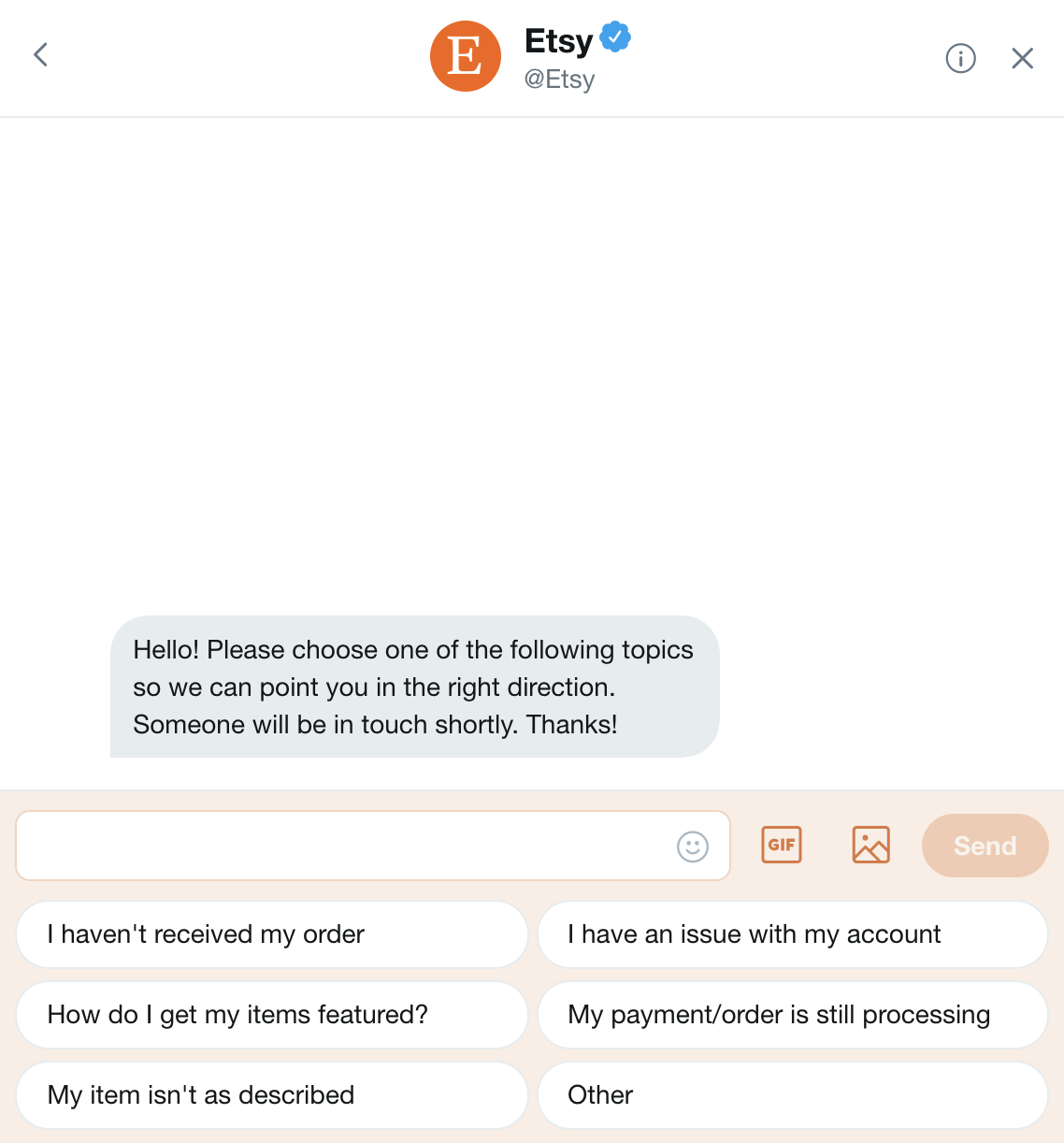
Besides handling customer service requests, chatbots are also beneficial for collecting feedback. To do this, you can program your chatbot to ask questions or start a dialogue with phrases such as:
- “Something on your mind? Let us know how we’re doing!”
- “Feel free to leave us some feedback. We’re always interested in hearing what you have to say!”
- “Mind answering one question about your experience today?”
You may actually find that your customers are more willing to be open and honest with a chatbot instead of an actual person.
Taking advantage of one or more of these strategies may help your brand get the feedback you’ve been looking for, and much more.
Final thoughts on using social media to collect feedback
Utilizing social media as a tool to collect feedback allows you to get ahead of complaints, improve customer service, and improve customer loyalty.
If you decide to use one of the social listening tools mentioned, pay attention to your sentiment score and use this as your benchmark for success. Each interaction you and your team have should help move your score in a positive direction.
Replying to direct messages, hosting social media polls and surveys, and creating contests and giveaways should all boost your chances of collecting user feedback too
So after you implement the tips you learned today, make sure to keep track of the insight you receive from your customers and followers. You may spot trends in support issues or find new ideas for products and services.
While it may seem like collecting feedback on social media just adds another item to your overflowing to-do list, it’s one that will pay off in the short-and long-term. After all, when you listen just as much as you speak to your target audience, you’ll get to know them better and become better equipped to handle all their needs.

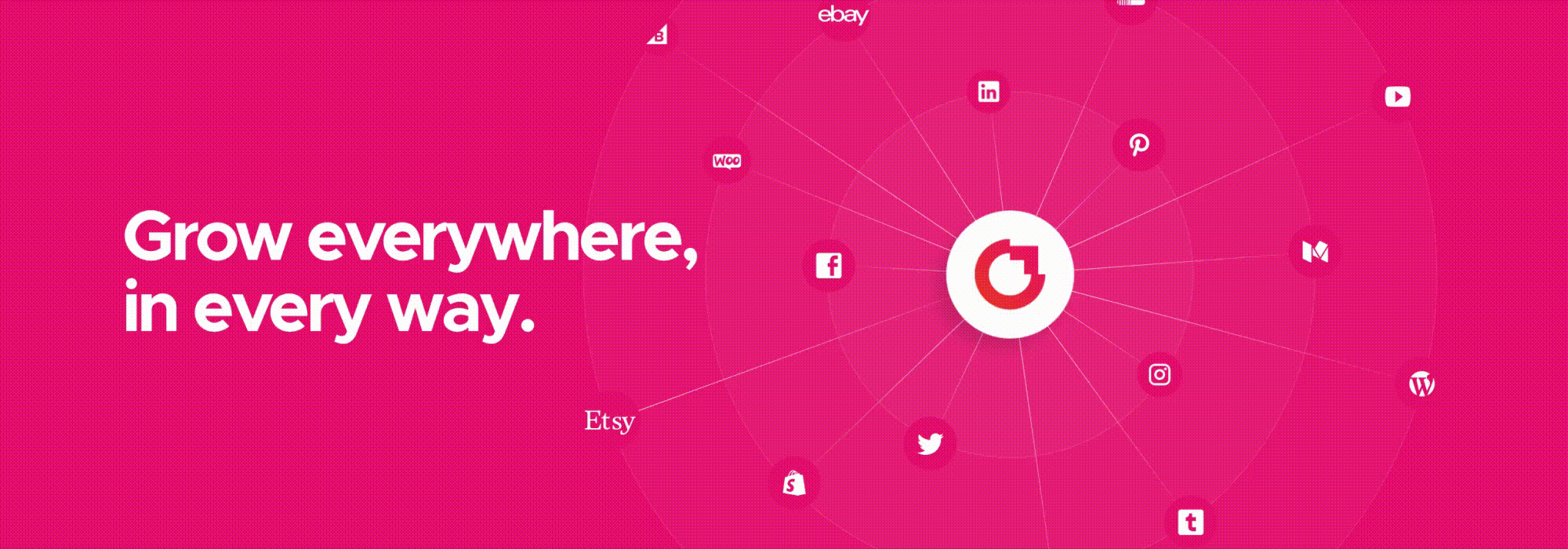

Thanks for this amazing article. You doing an awesome job.
ReplyDeletethank you and I'm happy for helping...
Deletethanks for sharing this article...
ReplyDelete